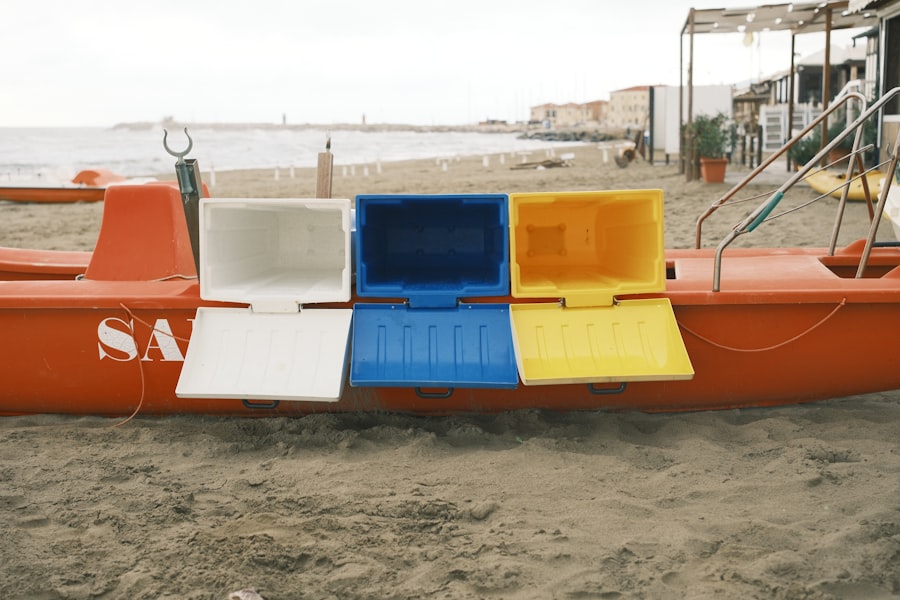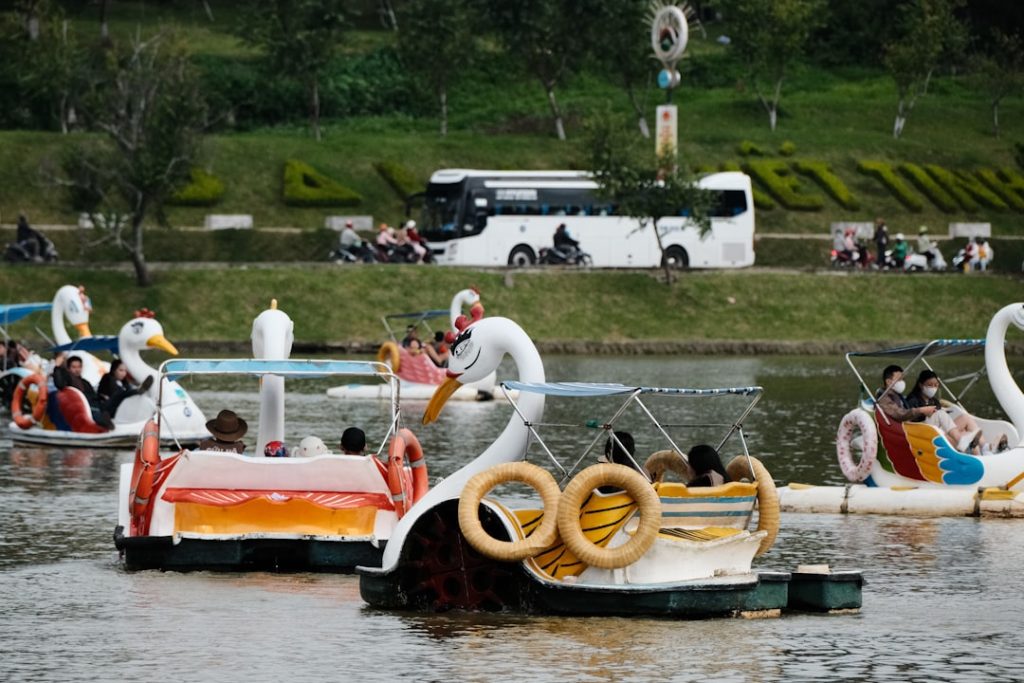Rubber boats, often referred to as inflatable boats, have gained immense popularity due to their versatility, portability, and ease of use. These vessels are typically constructed from durable materials such as PVC (polyvinyl chloride) or Hypalon, a synthetic rubber known for its resistance to UV rays and abrasions. The design of rubber boats allows them to be deflated and rolled up for convenient storage and transport, making them an ideal choice for recreational activities such as fishing, diving, and leisure cruising.
Their lightweight nature enables users to easily carry them to remote locations, where traditional boats may not be feasible. The history of rubber boats dates back to the early 20th century when they were primarily used by military forces for reconnaissance and amphibious operations. Over the decades, advancements in materials and manufacturing processes have transformed these boats into reliable vessels for both professional and recreational use.
Today, rubber boats are available in various sizes and configurations, catering to a wide range of activities from leisurely paddling on calm lakes to navigating rough ocean waters. Their adaptability has made them a staple in the boating community, appealing to both seasoned mariners and casual adventurers alike.
Key Takeaways
- Rubber boats vary in type and design, each suited for different uses and environments.
- Key factors in choosing a rubber boat include size, material, durability, and intended use.
- Used rubber boats can be a cost-effective option but require careful inspection and maintenance history review.
- Proper maintenance and safety precautions are essential to ensure longevity and safe operation of rubber boats.
- Innovations in materials and design are shaping the future of rubber boats, enhancing performance and user experience.
Factors to Consider When Choosing a Rubber Boat
When selecting a rubber boat, several critical factors must be taken into account to ensure that the chosen vessel meets the intended purpose and provides a safe and enjoyable experience. One of the foremost considerations is the boat’s size and capacity. Depending on the number of passengers and the amount of gear you plan to carry, you will need to choose a boat that can accommodate your needs without compromising safety or performance.
For instance, a small two-person inflatable may suffice for a tranquil day on a calm lake, while larger groups or those planning extended trips may require a more spacious model with higher weight limits. Another essential factor is the type of material used in the construction of the boat. PVC is often more affordable and lighter but may not offer the same level of durability as Hypalon.
Hypalon boats tend to be more resistant to punctures, UV damage, and extreme temperatures, making them suitable for more demanding environments. Additionally, consider the boat’s design features such as the presence of inflatable floors, which can enhance stability and comfort while on the water. The configuration of the boat’s chambers also plays a role in safety; multiple air chambers can provide added security in case of punctures.
Different Types of Rubber Boats Available for Sale

The market offers a diverse array of rubber boats tailored to various activities and preferences. One popular category is the inflatable dinghy, which is often used as a tender for larger vessels or for short excursions on calm waters. These boats typically feature a simple design with bench seating and are easy to inflate and deflate.
They are ideal for fishing trips or leisurely outings on lakes and rivers. Another type is the inflatable kayak, which has gained traction among outdoor enthusiasts seeking a lightweight and portable option for solo paddling adventures. These kayaks are designed with streamlined shapes that enhance speed and maneuverability while maintaining stability on the water.
Many models come equipped with adjustable seats and storage compartments, making them suitable for day trips or multi-day excursions. For those interested in more rugged applications, such as white-water rafting or offshore fishing, heavy-duty inflatable boats are available. These vessels are constructed with reinforced materials and often feature rigid floors for improved performance in challenging conditions.
They may also come equipped with additional features such as built-in rod holders or high-capacity storage areas to accommodate gear for extended trips.
Where to Find Rubber Boats for Sale
| Source | Type of Rubber Boats Available | Price Range | Location | Additional Features | Website |
|---|---|---|---|---|---|
| Local Marine Dealers | Inflatable, Rigid Inflatable Boats (RIBs) | Low to Mid | Various cities | Test rides, Warranty options | Varies by dealer |
| Online Marketplaces | New and Used Inflatable Boats | Low to High | Nationwide | User reviews, Shipping options | eBay, Craigslist, Amazon |
| Specialty Boat Retailers | High-end Inflatable and RIBs | Mid to High | Coastal regions | Customization, Financing | West Marine, Defender |
| Boat Shows and Expos | Various brands and models | Varies | Major cities | Discounts, Expert advice | Event-specific websites |
| Classified Ads in Boating Magazines | Used Rubber Boats | Low to Mid | Regional | Direct seller contact | Boating magazines |
Finding rubber boats for sale can be accomplished through various channels, each offering unique advantages depending on your preferences and budget. One of the most straightforward methods is to visit local marine supply stores or outdoor recreation retailers. These establishments often carry a selection of inflatable boats from reputable brands, allowing customers to physically inspect the products before making a purchase.
Additionally, knowledgeable staff can provide valuable insights into the features and benefits of different models. Online marketplaces have also become increasingly popular for purchasing rubber boats. Websites such as Amazon, eBay, and specialized boating retailers offer extensive inventories that can be browsed from the comfort of home.
Online shopping allows for easy price comparisons and access to customer reviews, which can aid in making an informed decision. However, it is crucial to ensure that you are purchasing from reputable sellers to avoid counterfeit products or subpar quality. Another option is to explore classified ads or local boating forums where individuals sell used rubber boats.
This route can often yield significant savings compared to buying new. However, it requires careful consideration and due diligence to ensure that the boat is in good condition and meets safety standards.
Tips for Buying a Used Rubber Boat
Purchasing a used rubber boat can be an economical choice, but it comes with its own set of challenges that require careful attention. First and foremost, it is essential to thoroughly inspect the boat for any signs of wear or damage. Look for punctures, tears, or abrasions in the material, particularly around seams where stress is most likely to occur.
If possible, inflate the boat fully before purchasing to check for leaks; this can be done by submerging it in water or using soapy water to identify air bubbles. In addition to physical inspection, inquire about the boat’s history and usage. Ask the seller about how often it was used, where it was stored, and whether it has undergone any repairs or modifications.
A well-maintained boat that has been stored properly will likely serve you better than one that has been neglected or exposed to harsh conditions. Furthermore, request any available documentation such as receipts or warranties that may provide insight into the boat’s quality and maintenance history.
Maintenance and Care for Your Rubber Boat

Proper maintenance is crucial for extending the lifespan of your rubber boat and ensuring optimal performance on the water. Regular cleaning is one of the most important aspects of care; after each use, rinse the boat with fresh water to remove salt, sand, or debris that could cause deterioration over time. For deeper cleaning, mild soap can be used along with a soft brush to avoid scratching the surface.
Storage practices also play a significant role in maintaining your rubber boat’s integrity. When not in use, it is advisable to deflate the boat completely and store it in a cool, dry place away from direct sunlight. Prolonged exposure to UV rays can weaken the material and lead to premature aging.
Additionally, avoid placing heavy objects on top of the deflated boat during storage, as this could create pressure points that may result in damage. Inspecting your rubber boat regularly for signs of wear is another key component of maintenance. Check all seams and valves for leaks or deterioration, and ensure that any repair kits are readily available should you encounter minor issues while out on the water.
By taking these proactive steps, you can significantly enhance your rubber boat’s longevity and performance.
Safety Precautions for Rubber Boat Owners
Safety should always be a top priority for rubber boat owners, regardless of their level of experience on the water. One fundamental precaution is ensuring that all passengers wear life jackets at all times while aboard the vessel. Life jackets are essential safety equipment that can save lives in case of capsizing or accidental falls overboard.
It is important to choose life jackets that are appropriate for each individual’s weight and size. Additionally, familiarize yourself with local boating regulations and guidelines before heading out on the water. Different regions may have specific rules regarding speed limits, required safety equipment, or designated boating areas that must be adhered to in order to ensure both personal safety and compliance with local laws.
Carrying essential safety gear such as flares, whistles, first aid kits, and fire extinguishers can also enhance safety during outings. Lastly, always check weather conditions before embarking on any boating trip. Sudden changes in weather can pose significant risks on the water; strong winds or storms can quickly turn calm waters into dangerous conditions.
Having a reliable means of communication onboard—such as a fully charged mobile phone or marine radio—can be invaluable in case of emergencies.
The Future of Rubber Boats: Innovations and Trends
The future of rubber boats appears promising as manufacturers continue to innovate and enhance their designs through advanced technology and materials science. One notable trend is the development of eco-friendly inflatable boats made from sustainable materials that reduce environmental impact without compromising performance or durability. These innovations cater to an increasingly environmentally conscious consumer base seeking sustainable alternatives in recreational activities.
Another exciting advancement is the integration of smart technology into rubber boats. Features such as GPS navigation systems, built-in fish finders, and even solar-powered charging stations are becoming more common in modern inflatable designs. These technological enhancements not only improve user experience but also provide added safety features that can help prevent accidents on the water.
Moreover, manufacturers are exploring modular designs that allow users to customize their boats according to specific needs or preferences. This trend enables boaters to adapt their vessels for various activities—whether it’s fishing, diving, or leisurely cruising—by adding or removing components as necessary. As these innovations continue to evolve, rubber boats will likely become even more versatile and appealing to a broader audience of outdoor enthusiasts.


